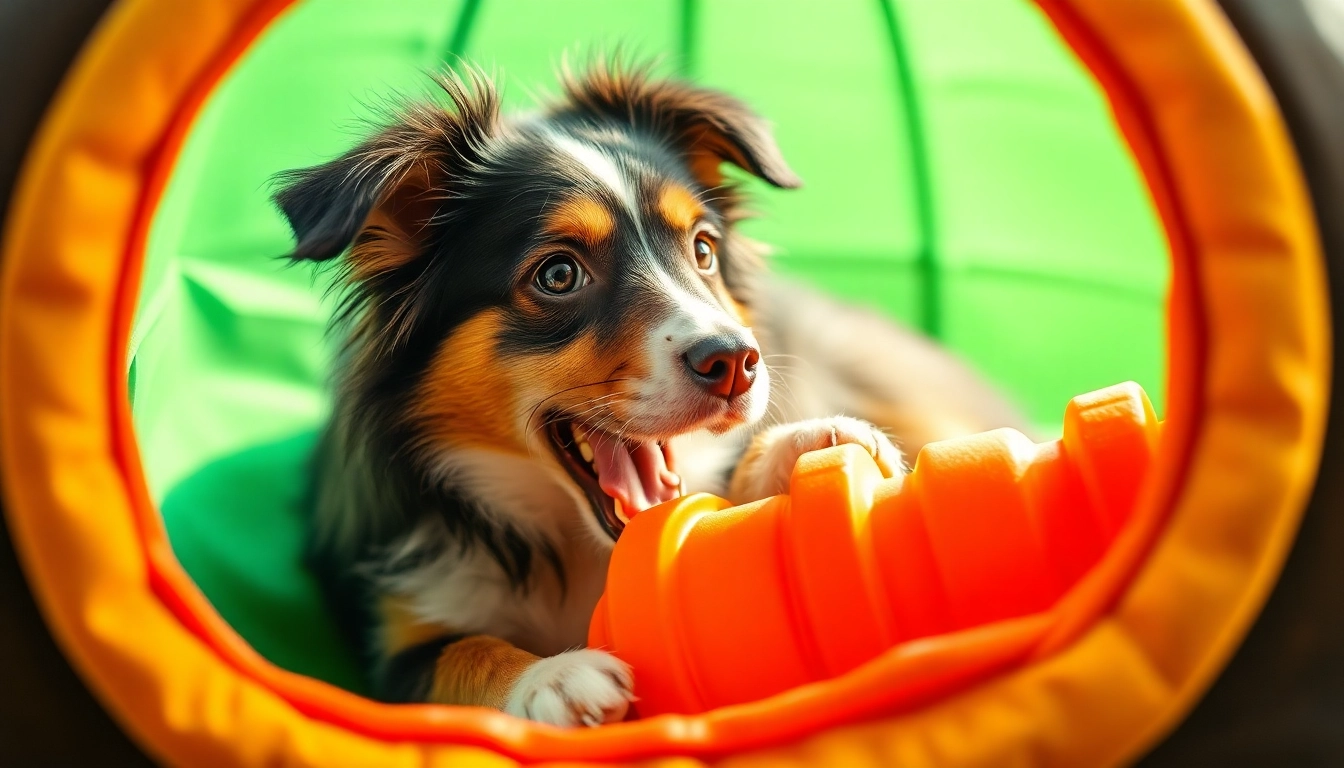Understanding Dog Toys
The Importance of Play for Dogs
Play is a fundamental part of a dog’s life. It is not just a luxury but a necessity that contributes to a dog’s overall well-being. Engaging in playtime helps foster emotional stability, enhances physical health, and stimulates mental agility. For dogs, playing is an opportunity to express their instincts, communicate with their environment, and bond with their human companions.
During play, dogs practice behaviors that are essential for their development, such as chasing, fetching, and problem-solving. The right toys can facilitate these activities, providing not only entertainment but also a means for dogs to learn and explore their world. Worse yet, a lack of play can lead to boredom, destructive behavior, and anxiety in dogs, which makes understanding their play needs crucial.
Different Types of Dog Toys
Dog toys come in several varieties, each designed for specific play styles and behavioral needs. The most common categories include:
- Chew Toys: Durable and tough, these toys satisfy a dog’s natural inclination to chew and help maintain dental health.
- Interactive Toys: Designed to engage dogs mentally and physically, these toys often involve puzzles or mechanisms that require solving.
- Fetch Toys: Balls and frisbees that promote exercise and outdoor play, they can help improve a dog’s agility and fitness.
- Plush Toys: Soft and cuddly, these toys offer comfort and companionship, especially to smaller or sensitive dogs.
- Rope Toys: Ideal for tug-of-war, they are also beneficial for dental care due to their fibrous material, which can help clean teeth.
Choosing Safe Materials for Dog Toys
Safety is paramount when selecting toys for your dog. Always opt for toys made from non-toxic materials. Rubber, natural fibers, and food-grade plastics are generally safe, while some synthetic materials can pose choking hazards or cause internal injuries if ingested. Look for toys that are durable and specifically designed for the size and strength of your dog, as even the safest materials can become dangerous when they break down.
Additionally, check for certifications and guidelines such as those from the American Society for the Prevention of Cruelty to Animals (ASPCA) or similar organizations that can ensure the quality and safety of dog toys on the market.
What is a Dog Toy Inside a Dog Toy?
Design and Functionality
A “dog toy inside a dog toy” concept refers to toys that are designed with an inner component, often a smaller toy, tucked within a larger one. This design usually incorporates multiple layers of interaction, challenging your dog to work through the outer layer to reach the rewarding inner toy. A great example of this would be toys that have a soft plush exterior with a squeaker inside, providing both texture and auditory stimulation.
Functionally, these toys serve to engage dogs in more complex play patterns, encouraging them to problem-solve while also satisfying their chewing need. They promote longer play sessions, as dogs will spend time excavating the inner toy, making these toys exceptionally engaging.
Benefits of Interactive Chew Toys
Interactive chew toys enhance the play experience in various ways:
- Mental Stimulation: Dogs are intelligent creatures that require mental challenges. Toys that require problem-solving keep their minds engaged.
- Stress Relief: Chewing is a natural stress-relieving activity for dogs. By directing their energy into safe toys, dogs can alleviate anxiety and frustration.
- Physical Exercise: Fetch and chase games associated with interactive toys promote physical health by ensuring that your dog remains active.
- Strengthening Bonding: Playing with interactive toys can enhance the bond between dog and owner, as it often involves human interaction during playtime.
Popular Options in the Market
When looking for a dog toy inside a dog toy, several options have gained popularity among dog owners:
- Hide-a-Squirrel Puzzle Toy: This toy features multiple plush squirrels hidden in a log, promoting interactive play and mental stimulation.
- KONG Classic Dog Toy: Renowned for its durability and versatility, it can be filled with treats to extend playtime.
- Boonie Bears Interactive Toys: These have various textures and inner toys, enticing dogs to chew and engage actively.
How to Introduce New Toys to Your Dog
Safety First: Supervision and Guidelines
Introducing a new toy, especially an interactive one, should always occur under supervision. This approach minimizes risks, as you can monitor your dog’s interaction with the toy and ensure it’s being used safely. Start by allowing your dog to explore the new toy without force, giving them a chance to engage at their own pace.
Establish guidelines by choosing a specific play area that is free from distractions, and ensure toys are appropriate for your dog’s size and chewing habits. This careful introduction not only prevents accidents but also sets the stage for positive associations with the new toy.
Tips for Easing the Transition
Transitioning to new toys can take time. To help your dog adjust:
- Encourage exploration by using treats or their favorite scent on the new toy.
- Set up an interactive session by playing together with the toy, modeling the appropriate behaviors.
- Be patient and give your dog time to adjust to the new stimulus without pressure.
Recognizing Your Dog’s Preferences
Every dog has unique preferences when it comes to toys. Some may love plush ones, while others prefer rubber or chewable materials. Observe your dog’s reactions to various toys to understand what they enjoy most. Pay attention to:
- The way they play: Do they prefer to fetch, chew, or cuddle?
- The toys they gravitate towards during playtime or when seeking comfort.
- How long they engage: The longer a dog plays with a toy, the more likely it is to be one of their favorites.
Maintaining Dog Toys for Longevity
Cleaning and Care Tips for Dog Toys
To ensure the longevity and safety of your dog’s toys, proper care and maintenance are essential:
- Regular Cleaning: Wash toys regularly with soap and water, especially if they are exposed to food or drool. Many rubber toys are dishwasher safe for easy cleaning.
- Inspection: Routinely check toys for wear and tear. Toys that are frayed or damaged should be replaced to avoid hazards.
- Storage: Store toys in a clean, dry place to avoid mold and decay, and consider rotating toys to keep your dog engaged.
Signs of Wear and When to Replace
Recognizing when a toy has reached the end of its life is crucial for your dog’s safety. Signs of wear include:
- Visible tears or holes, especially in plush toys, which may lead to ingestion of stuffing.
- Worn-out or cracked surfaces that can become choking hazards.
- Foul odors, indicating a build-up of bacteria or mold.
When you observe these signs, it’s time to replace the toy. Doing so prevents potential health risks and keeps your dog safe and happy.
Compounding Engagement through Rotational Toys
One effective strategy to maintain your dog’s interest in their toys is through rotational play. By organizing a rotation system for your dog’s toys, you can introduce a sense of novelty. Here’s how it works:
- Choose a selection of toys and divide them into groups.
- Each week, introduce a new set of toys while storing away the previous ones. This allows your dog to “rediscover” toys they may have lost interest in.
- Monitor which toys create the most excitement and adjust the selection according to their preferences.
Measuring Playtime Success
Behavioral Indicators of Enjoyment
When assessing whether a toy is successful or enjoyable, observe your dog’s behavior during playtime. Key indicators to watch for include:
- Tail wagging and playful barks, suggesting excitement and engagement.
- Repeated interaction with the toy, which shows a keen interest and enjoyment.
- Relaxed body language, indicating comfort and happiness with the toy.
Tracking Playtime and Engagement
Keep a log of your dog’s playtime with different toys to measure which ones engage them the most. Document the duration of play sessions, the type of play (fetch, tug, etc.), and any behavioral changes. This data can provide insights into your dog’s preferences, helping you make more informed choices about future toy purchases.
Long-term Benefits of Regular Play
Engaging in regular playtime with a variety of toys offers numerous long-term benefits for your dog, including:
- Enhanced Physical Health: Regular activity helps maintain a healthy weight and prevents obesity.
- Improved Mental Health: Dogs who play regularly are less prone to anxiety and stress-related behaviors.
- Stronger Human-Animal Bonds: Interactive play strengthens the relationship between dogs and their owners, fostering trust and companionship.
- Better Social Skills: Regular play can improve a dog’s ability to interact positively with other dogs and humans, leading to well-balanced behavior.
In conclusion, understanding the importance of dog toys, particularly innovative designs like a dog toy inside a dog toy, not only enriches your dog’s life but also enhances your relationship with them. Investing time in choosing the right toys, ensuring their safety through maintenance, and engaging them in play will undoubtedly lead to a happier, healthier pet.



